Diponegoro and the Java War (1825-1830)

After
the annexation of The Netherlands by France in 1811, the British took
over the remains of the VOC Empire. In the East Indies the British
Governor Raffles, who founded Singapore (which very soon economically
overpowered Batavia) in 1816 after his forced departure from Batavia,
has put through a lot of reformations in his five years as
Governor-Genearal of the former Dutch East Indies, at that time mainly
Java.
The return of the Dutch in 1816 - 1820 was not
problem-free. This was due to the fact that the Dutch wanted to turn a
lot of the "
reformations" around.
Financially the reinstatement of the East Indies was a disaster for the new and poor kingdom of William I.
In order to establish an equilibrium between England and the much feared
France, the British wanted the new Dutch Kingdom (officially united
with Belgium until 1839) to have a few colonies again. The British were
even so kind as to give Holland a loan, so that they could keep head
above water (financially). Monopolising the trade in
opium
eventually resulted in the needed profits only around 1828.This, in
fact was the start of the so-called Indian Positive Balance ("Indisch
Batig Saldo"). (see my
introduction page)
The poor Holland (hardly any money in the bank) had to try to get back
"old" authority over the East Indies. On top of it all there were large
revolts from the moment that Holland returned to the East Indies, for
instance the one on the Moluccas, headed by
Pattimura .
Nobody wanted those Dutch, who tactlessly tried to turn back time to the good old days of the VOC, back.
One of the largest, and for the Netherlands the most expensive, revolt was the Java War under guidance of Diponegoro..

The
real motive eventually was a problem with succession at the courts of
Yogakarta. In the meantime, it was also a problem that the Javan
nobility was not allowed to ask rent for the land anymore. This was one
of the changes that Raffles and his predecessor
"The Thundering Grande Lord" Daendels had put through.
The Dutch Daendels was indeed the General who
invaded Holland supported by the French in 1794. During his East Indies
period as Governor-General (1808-1811), he gave order to build the Grote Postweg ("Grand Postal Road ") from the West to the East of Java, thousands of peasants were forced to do this and died
due to severe labour. After his return to Europe he joined Napoleon on
his way to Moscow and finally died as Governor-General of the former
slave fortress Elmina in the present state of Ghana (see my homepage)
The
Java nobility was deprived of their income. This did not mean that the
population had prospered, because the colonial authorities wanted to
start collecting this. But that is really a completely different story.
Pangeran Prince Diponegoro
Continuing drought and a few failed harvests logically caused commotion
amongst the population. And now those much-hated Dutch were back again!
The memory of the compulsory Lord services for Daendels for the
construction of the Grand Postal Road from West- to East-Java was still
fresh. The thundering Grande Lord prouded himself in the fact that the
Grand Postal Road was built at minimal costs in only one year
(naturally: the compulsory Lord services). Thousands of Javanese did not
survive!
The personal frustrations of pangeran Prince
Diponegoro would eventually be the cause of the outburst, because he was
not chosen to be the next sultan of Yogakarta.
The construction of a road through his area was the spark that lit the
fire. It has never become clear if this was connected to the Grand
Postal Road.
Diponegoro became convinced that he was chosen by
Allah to lead a rebellion against those secular Dutch. So then a, in the
eyes of the Javanese, holy war started to which everybody, the nobility
as well as the unhappy peasants, had to commit. Soon, Java was
completely in frenzy. The Dutch did not understand at all....
The Dutch authorities were totally surprised by the massiveness of the
rebellion and the fanatism. Defeat after defeat was suffered. It even
looked like they had to give up Java again. This was not preferable
because Java was to be the pillar on which the poor Dutch economy had to
stand again. (!)
The "army" that was stationed in the East Indies had their hands full on
all those other local rebellions, so they could not concentrate on
their defence against Diponegoro.
Diponegoro developed into a charismatic leader with excellent tactic
insight. The Dutch had not learned a thing from the guerrilla tactics
during the Boni wars in Surinam. (see my
Surinam link)
They left for the homelands in large groups (beating drums or not)…they
had no defence against Diponegoro, who applied a kind of a tactic of
“burnt earth”. No food was left anywhere and, more important, no clean
water in the jungle for the fully European packed Dutch troops.
This way, the Indian army lost one third of its men every year and this
had to be completed from Europe as fast as possible. In their utter
despair they set up a campaign in Europe to recruit people. They also
bonded with several Indian monarchs from out of Java. In 1830 they had
about 20,000 men, half of them were Europeans.
The tactics of the new Dutch head De Kock eventually were of great importance. He "
simply" adopted the methods of Diponegoro and established small but heavily fortified posts ("
bentengs"). Moreover, the Dutch proved to be masters in the "
divide and conquer"
principle. The peasants were promised lower costs by the instrument of
land lease, because the nobility would again earn the rent. That way,
the knife cut both ways: the peasants thought they were better off and
the nobility had income again. The nobility was again able to negotiate
with the European land loaners who wanted to rent land from the Java
farmers
Surrender of Prince Diponegoro to General De Kock, a primary school poster...
Diponegoro was willing to negotiate but was still, despite an escort,
imprisoned by De Kock in Magelang during the start of the negotiations
on 28 March in 1830.

Diponegoro had demanded that he would be recognised as sultan and as the head of the Islam on Java.
Those demands were too large for an already beaten Prins. This suited de Kock well: "
I
did not at all find it unpleasant. This was a perfect opportunity for
me to tell him that we could not only not indulge in such demands, but
that I also considered him to be my prisoner from that moment on."
Diponegoro was exiled to Makassar on Celebes. In 1837, he was even
visited by Prince Henry (the youngest son of the later King William II)
who called him a proud man who was captured by the Dutch because of "
treason".
Diponegoro spent his days with writing texts from the Koran. He died in 1855.
His grave in Makassar is a
national monument now.
The
university of Semarang on Central-Java (the area where Diponegoro lived) is named after Diponegoro.
Pictures of the prison of Diponegoro can be found
HERE
Diponegoro's saddle and lance were moved to Holland as a bounty and were returned to Indonesia in 1975.
Apart from the large destruction, the Java War killed (estimated)
200,000 Javanese, (famished included) 7,000 Native and 8,000 European
soldiers. The political consequences were clear: the Java nobility had
lost its power up until the next century.
 What happened with the Dutch:
What happened with the Dutch:
Governor-General Van der Capellen had returned to Holland in 1825 a
frustrated man: everything had failed and moreover he had to tell King
William I that the rebellion of Diponegoro might well be the end of the
new colonial adventure.
This man must have had a very bad time pacing around on his trip back to Holland........


The Flemish (for Belgium and Holland were united now) Du Bus de Gisignies
(left photograph)
would be his successor. The story says that Du Bus de Gisignies weighed
a 145kg, when he returned to Europe in 1830, he had lost 60kg.
His successor Van den Bosch
(photograph on the right) started with new ideas: he was to be the founder of the
cultural system. According to King William I, he was able to produce money from the Indies like "
Moses could get water out of a rock". This was in spite of the debt of 40 million guilders, caused by Diponegoro and others, he had to start with.
If you are interested in a (
year 1941) biography about
all the Dutch East Indies Governor-Generals, including the above mentioned gentlemen, please use this
link.
On the map below the overview of the Nineteen-Century wars that had to be fought in order to instate Dutch authority everywhere:
Like to read my other stories about the Dutch East Indies?
More to come......
and
in English as soon as possible (some sites are already translated :
see below the header after opening of the requested story in Dutch )
|
|
Jan Pieterszn Coen and the extinction of the population on the Banda islands
|
|
|
The "betrayal" of the ( present holiday ) island of Lombok and the "Treasures of Lombok"
|
|
|
The pacification of the ( present holiday ) island of Bali
|
Wilhelmus van Nassaue,
Ziet gij dien heldenstoet?
Zij schoten op de vrouwen
En drenkten 't land met bloed.
De kwasten der banieren
zijn darmen van een kind.
Licht dat ge aan hun rapieren,
nog vrouwenharen vindt.
|
The war of aggression against Aceh
The war of aggression against Aceh has been the largest Dutch war ever which resulted in 100,000 people killed and 1,000,000 people injured
|
|
|
Photos and images of the Dutch East Indies
|
ARCENGEL
Dutch East Indies ARCENGEL Dutch East Indies ARCENGEL Dutch East Indies
ARCENGEL Dutch East Indies ARCENGEL Dutch East Indies ARCENGEL Dutch
East Indies ARCENGEL Dutch East Indies ARCENGEL Dutch East Indies
ARCENGEL Dutch East Indies ARCENGEL Dutch East Indies ARCENGEL Dutch
East Indies ARCENGEL Dutch East Indies ARCENGEL Dutch East Indies
ARCENGEL Dutch East Indies ARCENGEL Dutch East Indies ARCENGEL Dutch
East Indies ARCENGEL Dutch East Indies ARCENGEL Dutch East Indies
ARCENGEL Dutch East Indies ARCENGEL Dutch East Indies ARCENGEL Dutch
East Indies ARCENGEL Dutch East Indies ARCENGEL Dutch East Indies
ARCENGEL Dutch East Indies ARCENGEL Dutch East Indies ARCENGEL Dutch
East Indies ARCENGEL Dutch East Indies ARCENGEL Dutch East Indies
ARCENGEL Dutch East Indies ARCENGEL Dutch East Indies ARCENGEL Dutch
East Indies ARCENGEL Dutch East Indies ARCENGEL Dutch East Indies
ARCENGEL Dutch East Indies ARCENGEL Dutch East Indies ARCENGEL Dutch
East Indies ARCENGEL Dutch East Indies ARCENGEL Dutch East Indies
ARCENGEL Dutch East Indies ARCENGEL Dutch East Indies ARCENGEL Dutch
East Indies ARCENGEL Dutch East Indies ARCENGEL
......a Northsea coast state of robbers......
.....building railways from stolen money
stunned the victims with
opium, Gospels and Dutch gin...
I dare to ask you in confidence is it
your order that more than thirty
million of your subjects in the East are maltreated and
squeezed in Your name?
Multatuli [1860] ...to the Netherlands...King William III
....that village was set to fire, because it was captured by the Dutch.......
Yes, the village was captured by the Dutch, so it was burning
After each Dutch victory a fire
After each Dutch victory a destruction.
Dutch warfare methods induce desperation
Translated by Sonja van den Heijkant
Source: http://home.iae.nl/users/arcengel/NedIndie/diponegoroengels.htm
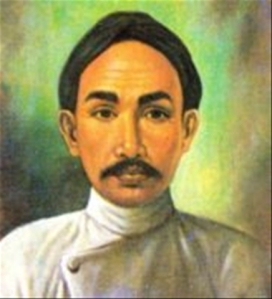
 After
the annexation of The Netherlands by France in 1811, the British took
over the remains of the VOC Empire. In the East Indies the British
Governor Raffles, who founded Singapore (which very soon economically
overpowered Batavia) in 1816 after his forced departure from Batavia,
has put through a lot of reformations in his five years as
Governor-Genearal of the former Dutch East Indies, at that time mainly
Java.
After
the annexation of The Netherlands by France in 1811, the British took
over the remains of the VOC Empire. In the East Indies the British
Governor Raffles, who founded Singapore (which very soon economically
overpowered Batavia) in 1816 after his forced departure from Batavia,
has put through a lot of reformations in his five years as
Governor-Genearal of the former Dutch East Indies, at that time mainly
Java. The
real motive eventually was a problem with succession at the courts of
Yogakarta. In the meantime, it was also a problem that the Javan
nobility was not allowed to ask rent for the land anymore. This was one
of the changes that Raffles and his predecessor
The
real motive eventually was a problem with succession at the courts of
Yogakarta. In the meantime, it was also a problem that the Javan
nobility was not allowed to ask rent for the land anymore. This was one
of the changes that Raffles and his predecessor
















![[Portrait photo of Wilbur Wright]](http://www.wright-house.com/wright-brothers/wrights/photos/Wilbur_Portrait200.JPEG)
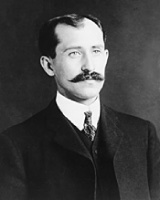
![[picture of Orville Wright's famous first airplane flight, 1903]](http://www.wright-house.com/wright-brothers/wrights/photos/1903-flight-wright-airplane.gif)
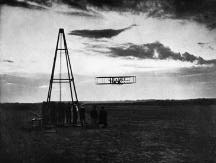
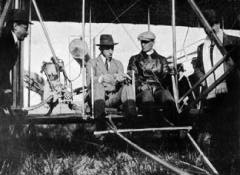
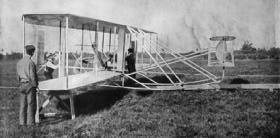
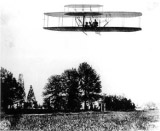
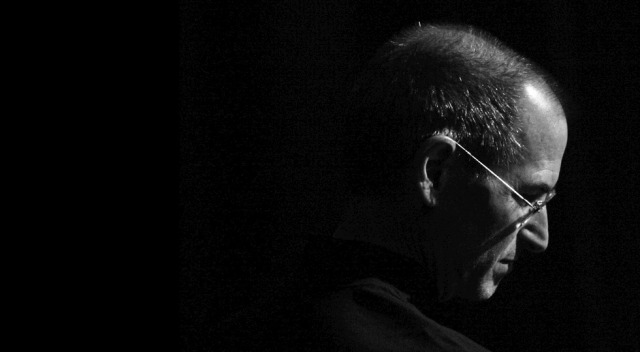
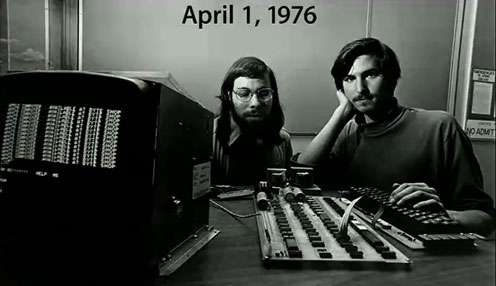

 Everyone experiences those formative “A-ha!” moments when a scene or image strikes us in a profound way. Many spend their lives building beliefs and passions stemming from that very moment. Inspired by the success his friends had using red wiggler worms to process compost, Szaky felt there could be a business in commercially producing and distributing a product he would call ‘Worm Poop’. Szaky, 30, is founder and CEO of Terracycle, which sells consumer products made from recycled waste. He was named “Best CEO under Thirty” by Inc. magazine in 2006, beating out Facebook’s Mark Zuckerberg.
Everyone experiences those formative “A-ha!” moments when a scene or image strikes us in a profound way. Many spend their lives building beliefs and passions stemming from that very moment. Inspired by the success his friends had using red wiggler worms to process compost, Szaky felt there could be a business in commercially producing and distributing a product he would call ‘Worm Poop’. Szaky, 30, is founder and CEO of Terracycle, which sells consumer products made from recycled waste. He was named “Best CEO under Thirty” by Inc. magazine in 2006, beating out Facebook’s Mark Zuckerberg.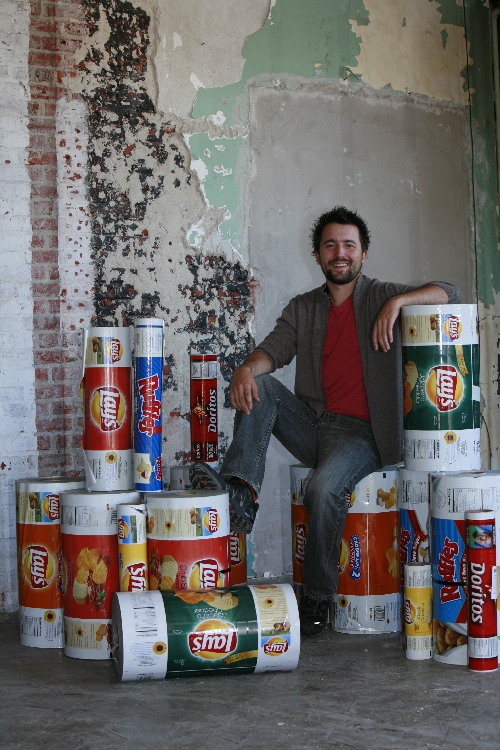
 In 2002 Szaky was a freshman at Princeton when he heard about a friend’s discovery.If you fed organic waste to earthworms, they produced fertilizer that plants seemed to love. Fascinated by the concept, Szaky quit school during his sophomore year to launch what is now TerraCycle. From that point on, Szaky was a man obsessed. He paid a Florida inventor $20,000 for a contraption that housed millions of worms and began shoveling Princeton University’s food waste into it to feed an ever-growing colony of worms.He admitted he never was undaunted by having to shovel 150-pound barrels of garbage daily.
In 2002 Szaky was a freshman at Princeton when he heard about a friend’s discovery.If you fed organic waste to earthworms, they produced fertilizer that plants seemed to love. Fascinated by the concept, Szaky quit school during his sophomore year to launch what is now TerraCycle. From that point on, Szaky was a man obsessed. He paid a Florida inventor $20,000 for a contraption that housed millions of worms and began shoveling Princeton University’s food waste into it to feed an ever-growing colony of worms.He admitted he never was undaunted by having to shovel 150-pound barrels of garbage daily. To build up a surplus of bottles, he persuaded church and school groups to form “bottle brigades,” which would collect bottles in their neighborhoods in return for small donations. The idea was so good that Szaky took top honors at the Carrot Capital Business Plan Challenge in 2003 and a prize
To build up a surplus of bottles, he persuaded church and school groups to form “bottle brigades,” which would collect bottles in their neighborhoods in return for small donations. The idea was so good that Szaky took top honors at the Carrot Capital Business Plan Challenge in 2003 and a prize  of $1m in investment. A good thing, as Terracycle had only $500 in the bank at the time.Under Szaky’s direction, more and more trash fed more and more worms which fed more and more plants, and, with Americans throwing out 2.5 million plastic bottles an hour, packaging was also readily available.
of $1m in investment. A good thing, as Terracycle had only $500 in the bank at the time.Under Szaky’s direction, more and more trash fed more and more worms which fed more and more plants, and, with Americans throwing out 2.5 million plastic bottles an hour, packaging was also readily available. As the company grew, Szaky saw opportunities everywhere. Trash was something to be ‘upcycled’ into an offering more valuable than the original product. He started with seed starters and potting mix, made from and packaged in waste. Then he offered the Urban Art Pot, made from electronic waste. Then came plastic products, from kites to clipboards, all completely recycled.Today, more than 19 million people around the world collect trash for Terracycle, saving about half a billion pieces of waste per month from ending up in landfills.
As the company grew, Szaky saw opportunities everywhere. Trash was something to be ‘upcycled’ into an offering more valuable than the original product. He started with seed starters and potting mix, made from and packaged in waste. Then he offered the Urban Art Pot, made from electronic waste. Then came plastic products, from kites to clipboards, all completely recycled.Today, more than 19 million people around the world collect trash for Terracycle, saving about half a billion pieces of waste per month from ending up in landfills. Estimated to be worth at $5 million, he recently bought a modest house in nearby Princeton and in an interview said the he prefers to buy as little as possible. “I don’t want to go to Ikea and throw it out after three years, so I buy expensive durable products.’ He has worn the same pair of jeans for nine months and his favorite cotton blazer is 10 years old. Another unusual part of his company is its intern program. Szaky bought a 10-bedroom 7,000 square-foot Victorian house near Trenton High School and hired a cook. Interns work for free, and in return they get room boarding and food.Once the company is self sufficient, I really want to go back to school ”he said. A behavioral economics major, Szaky hopes to return to his former advisor, Nobel laureate Daniel Kahneman.
Estimated to be worth at $5 million, he recently bought a modest house in nearby Princeton and in an interview said the he prefers to buy as little as possible. “I don’t want to go to Ikea and throw it out after three years, so I buy expensive durable products.’ He has worn the same pair of jeans for nine months and his favorite cotton blazer is 10 years old. Another unusual part of his company is its intern program. Szaky bought a 10-bedroom 7,000 square-foot Victorian house near Trenton High School and hired a cook. Interns work for free, and in return they get room boarding and food.Once the company is self sufficient, I really want to go back to school ”he said. A behavioral economics major, Szaky hopes to return to his former advisor, Nobel laureate Daniel Kahneman.